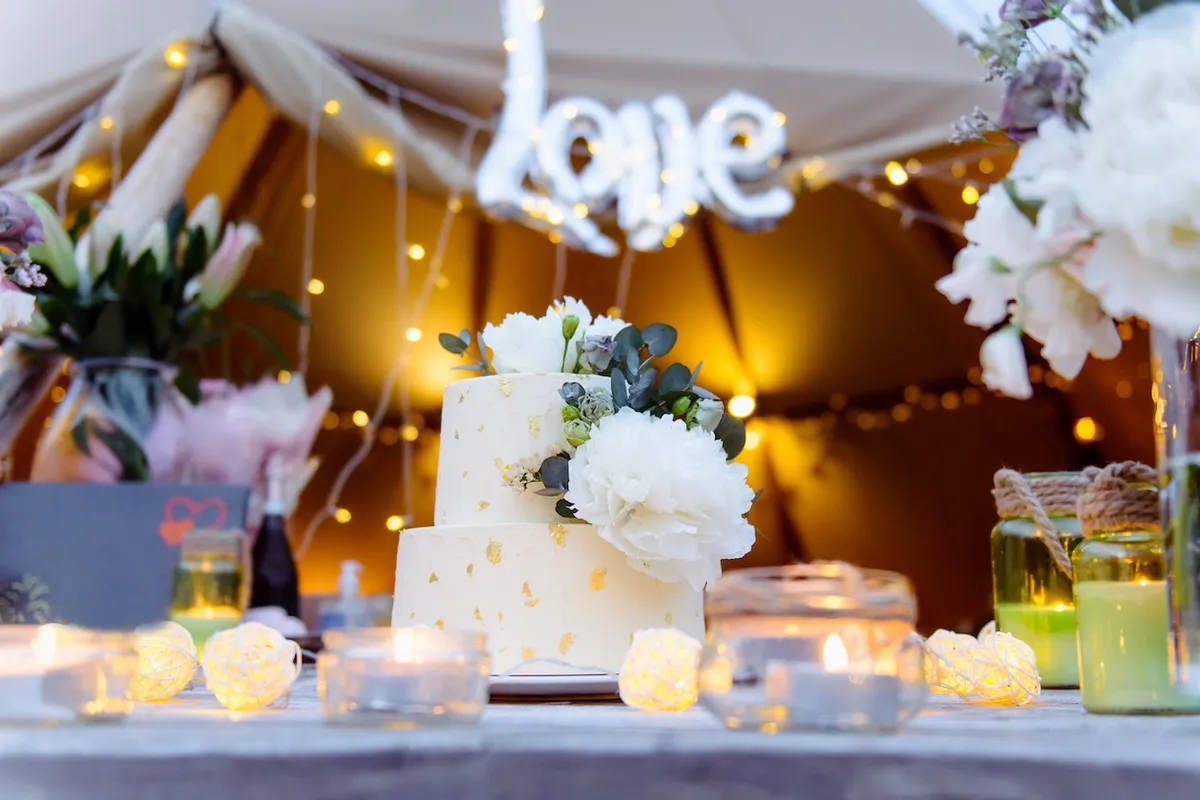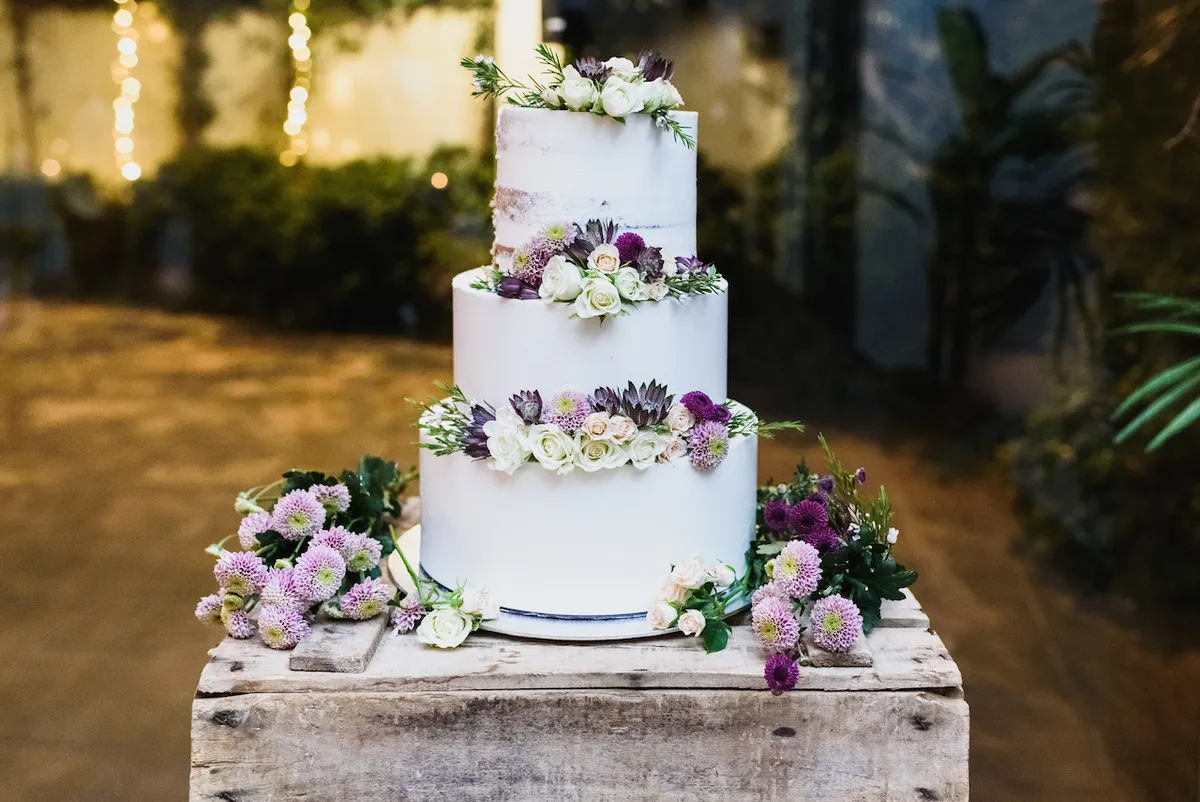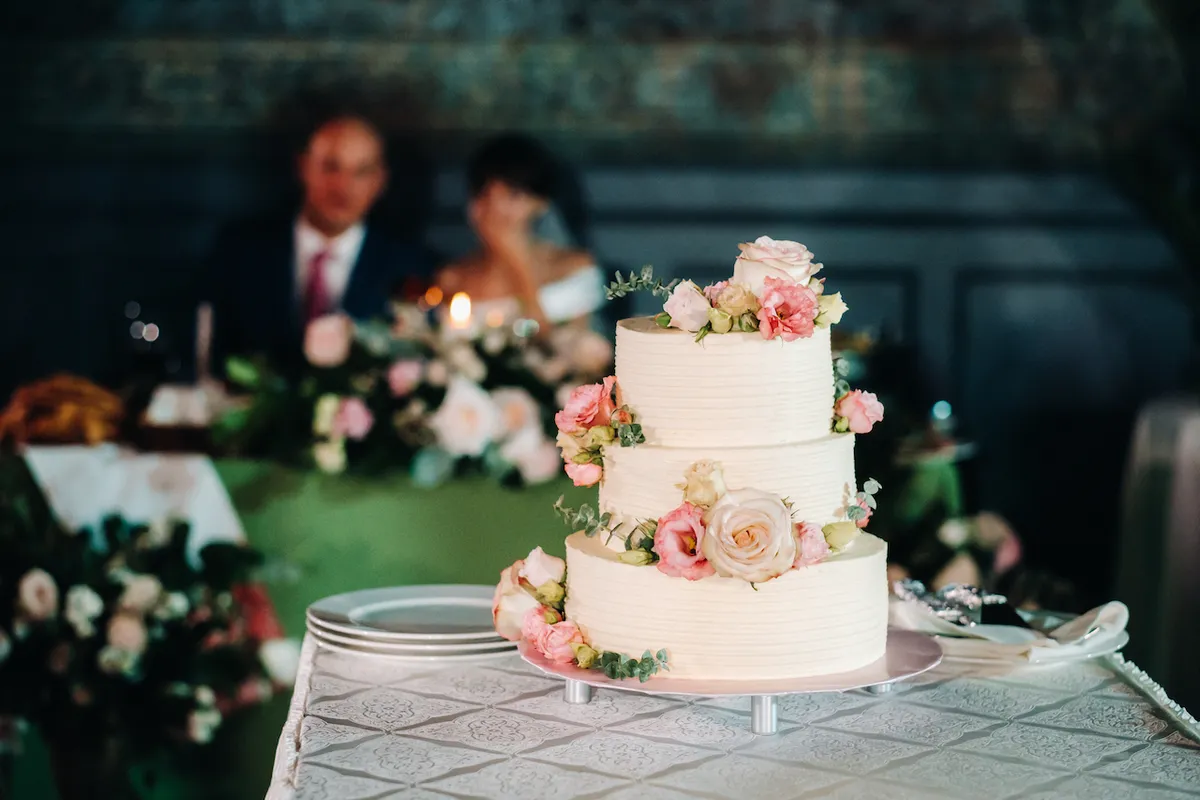
Choosing the perfect wedding cake can be as challenging as finding the right dress. In ancient Rome, a simple barley cake would seal a marriage. This blog will slice through history, revealing how wedding cakes evolved from a modest grain loaf to today's show-stopping centerpieces.
Discover the sweet story behind this delicious tradition!
Ancient Roman Wedding Cakes
The tradition of wedding cakes dates back to ancient Rome, where barley cakes were broken over the bride's head for good luck. This practice symbolized fertility and prosperity for the newlyweds.
Barley cake tradition
Long ago in ancient Rome, a wedding wasn't complete without breaking a barley cake over the bride's head. This custom was seen as a sign of good fortune and the start of the couple's new life together.
Guests gathered would pick up pieces of the broken cake for luck, hoping it would bring them love and happiness just like the newlyweds.
Crumbs from this special barley dessert were also collected by those at the ceremony. They believed these crumbs held magical powers to bless their own lives. The tradition set an early model for what has now become cutting and sharing wedding cakes around the world today.
Evolution of Wedding Cakes
During medieval times, wedding cakes began to rise in popularity and the evolution of icing became a significant part of their design. To learn more about how wedding cakes have evolved from ancient Rome to modern day, keep reading!
Medieval times
During medieval times, wedding cakes were not the tiered, beautifully decorated confections we know today. They were actually more like bread and often served as a symbol of fertility and prosperity.
These cakes, made of wheat or barley, would be broken over the bride's head to bring good fortune to the couple. Over time, the tradition evolved into stacking small buns or scones at weddings and having the newlyweds kiss over them for good luck.
The use of marzipan in cake decoration also became popular during medieval times. Marzipan was used to create intricate designs and shapes such as flowers, fruits, and animals on wedding cakes.
Rise in popularity
Wedding cakes rose in popularity during the Middle Ages as marriage traditions evolved. The tiered cake design was introduced, symbolizing prosperity and fertility for the newlyweds.
As wedding ceremonies became more elaborate, so did the wedding cake, with intricate decorations and luxurious ingredients becoming customary. Over time, wedding cakes transitioned from simple barley cakes to opulent confectionery masterpieces, reflecting cultural customs and historical significance.
The rise in popularity of destination weddings has also influenced modern-day wedding cake trends. Couples now embrace unique flavors and designs inspired by their travel experiences.
Evolution of icing
From the Medieval times to modern days, icing on wedding cakes has evolved. In the past, it was simple and plain. But now, it's colorful and elaborate. The evolution of icing on wedding cakes reflects changing tastes and styles over time.
In medieval times, white icing symbolized purity and a sign of social status. As popularity rose in the Victorian era, intricate designs and royal icing became fashionable. Today, wedding cake icing comes in various flavors with artistic decorations like fondant or buttercream.
This evolution mirrors the changing trends in wedding customs and culinary history.
Symbolism of Wedding Cakes
Wedding cakes have long held symbolic significance, bringing good fortune to the newlyweds and signifying unity between the couple. The religious symbolism of wedding cakes has also played a significant role in marriage ceremonies throughout history.
Bringing good fortune
Wedding cakes have symbolized good fortune for centuries. In ancient Rome, breaking a barley cake over the bride's head was believed to bring good luck and fertility to the couple.
This tradition evolved into tiered fruitcakes in medieval times, where newlyweds attempted to kiss over taller cakes for a lifetime of prosperity. The act of cutting and sharing the wedding cake at modern ceremonies still represents bestowing blessings upon guests.
The symbolism behind wedding cakes is deeply rooted in bringing luck and prosperity to the newlyweds. Whether through early Roman rituals or modern customs, wedding cakes continue to bear significance as a harbinger of good fortune for couples embarking on their marital journey.
Signifying unity
Wedding cakes have long been a symbol of unity between the bride and groom. The tradition of cutting the cake together signifies their first task as a married couple, highlighting their commitment to sharing responsibilities.
Additionally, in some cultures, the act of feeding each other the first bite represents their mutual support and care for one another throughout their life together.
The wedding cake's layers also represent the joining of two families through marriage. As each layer is stacked upon the other, it symbolizes the merging of different familial backgrounds into one cohesive unit.
Religious symbolism
Wedding cakes have long held religious symbolism, representing the sweetness and fertility that couples hope for in their marriage. In medieval times, the tradition of stacking tiers symbolized prosperity and a promise of future children.
The white icing on wedding cakes became popular after Queen Victoria's wedding, symbolizing purity and innocence in Christian ceremonies. Today, many couples continue to incorporate religious symbols into their cake design such as crosses or doves to signify spiritual unity.

Modern Day Wedding Cakes
Distinctly English tradition with popular flavors and designs that reflect the couple's taste and style. Destination weddings in Italy also offer unique opportunities for modern wedding cakes inspired by local culinary traditions.
Distinctly English tradition
English wedding cakes have a distinct tradition of being fruitcakes covered in marzipan and royal icing. This tradition dates back to the medieval era when dried fruits and nuts were expensive, symbolizing wealth and fertility for the couple.
The top tier of the cake is often preserved for the christening ceremony of the first child, signifying continuity and good fortune.
Contemporary English wedding cakes also incorporate modern designs and flavors such as sponge or chocolate cakes with intricate decorations. Many couples opt for destination weddings in Italy, where they can enjoy traditional Italian wedding desserts alongside their English wedding cake.
Popular flavors and designs
Wedding cakes come in various flavors and designs, tailored to the couple's preferences and the overall theme of the ceremony. Some popular flavors include vanilla, chocolate, red velvet, and lemon. Designs range from classic and elegant tiered cakes to modern and artistic creations. Intricate sugar flowers, metallic accents, and personalized toppers are common design elements. Additionally, naked or semi-naked cakes have gained popularity for a rustic or minimalist aesthetic. Destination weddings in Italy often feature traditional Italian flavors such as tiramisu or limoncello-infused cakes.
Destination weddings in Italy
Italy has become a popular choice for destination weddings, offering beautiful landscapes, rich history, and exquisite cuisine. Couples can choose from luxurious villas in Tuscany, romantic coastal settings on the Amalfi Coast, or historic cities like Rome and Florence as the backdrop for their special day.
Italian weddings often incorporate local traditions such as serving traditional dishes like pasta and tiramisu. The stunning architecture and natural beauty of Italy provide an enchanting setting for couples to exchange vows and create lasting memories with their loved ones amidst centuries-old charm.

Conclusion
In conclusion, understanding the history of wedding cakes provides insight into the rich traditions and symbolism associated with this customary celebration. The evolution from ancient Rome to modern-day demonstrates how wedding cakes have symbolized unity, good fortune, and religious significance.
Embracing popular flavors and designs allows couples to personalize their distinctly English tradition with practicality and efficiency. Appreciating the impact of these time-honored baking traditions encourages a deeper connection to wedding symbolism and meaning.
Further exploration of additional resources or guidance can enrich one's knowledge about pastry art and its role in weddings. Reflecting on these historical roots adds depth and appreciation to the significance of wedding cakes in today's diverse wedding celebrations.
Get legally married online
In partnership with Courtly, get legally married online.
From start to “I do.” Courtly team is fully committed to the cause: getting you married. They've done more remote weddings than anyone. Thousands of couples have counted on Courtly and we know what it takes to secure your legal marriage certificate.
Also, enjoy an exclusive discount available only to the MarryOnChain community! Use code MARRYONCHAIN to get $75 off your wedding.
RelatedRelated articles
All posts




